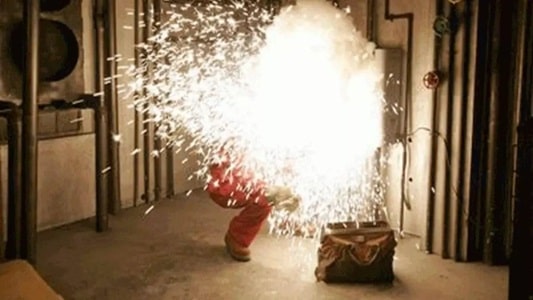More than 2,000 workers are injured in electrical accidents each year. One of the primary causes is electrical arcing, which occurs when an electrical current jumps from one ungrounded conductor to another, passing through the air. These incidents can result in severe and devastating injuries to workers as severe damage to equipment.
If you own or lease a business property, you must understand these important facts about electrical arc incidents.
The Danger of Electrical Arc Flash
An electrical arc flash is one of the most dangerous hazards associated with electrical work. Known as a flashover, it’s an explosion reaching temperatures up to 35,000°F, hotter than the melting point of any known element and four times hotter than the sun’s surface.
The rapid explosion exposes workers to potentially devastating injuries:
- Severe internal and external burns from hot gasses and vaporized metal
- Temporary or permanent blindness from the intense light
- Respiratory and other internal injuries from the high-pressure blast wave
- Physical trauma from debris
- Hearing damage and loss
Sadly, many employees require extensive medical care after an arc flash incident, incurring more than $1,000,000 in medical costs and failing to reach their former quality of life.
Furthermore, an arc flash destroys electrical equipment, requiring extensive downtime and repairs.
What Causes Electrical Arc Incidents?
An electrical arc occurs when an electric current deviates from its normal path and travels through the air to a different conductive surface. The most common cause behind the current veering off path is human error.
It’s been estimated that up to two-thirds of electrical arc flashes are caused by human error and carelessness. No matter how experienced the worker is, fatigue, distraction, time constraints, or overconfidence can result in working too quickly or bypassing safety measures. All it takes is a dropped bolt or a tool slipping at the right moment to cause an incident.
Outside of human error, common causes for electrical arcs include:
- Using parts not rated for the equipment on which they’re being used
- Corrosion and other wear and tear from
- Dust or condensation buildup around conductive surfaces
- Poorly installed or maintained switches and circuit breakers
How to Prevent and Mitigate Arc Flash
Given the risk to people and equipment, knowing how to prevent arc flashes is vital. It’s impossible to eliminate any possibility of arcing but you can take these important steps to ensure workers are as safe as possible.
- Place warning labels on all electrical equipment specifying the voltage, energy levels, and personal protective equipment (PPE) requirements.
- Properly train workers on the hazards of electrical arcs by providing arc flash training courses from Benchmark, the requirements for workplace safety, how to identify potential risks, and what mitigation factors to undertake.
- Develop a job plan that includes a full arc flash risk assessment to identify hazards such as faulty or damaged equipment and live parts.
- Regularly inspect and maintain systems to identify faulty equipment and loose connections.
- Power down any systems before starting work. While this is the most effective option, it’s often not possible to work on de-energized equipment.
- Require workers to wear appropriate PPE such as hand, eye, ear, and face protection.
As an employer, the health and safety of your workers is a top priority, and electrical arcs are a very real and serious risk. Thankfully, through proper training, maintenance, and planning this risk can be mitigated to create a safe work environment.


